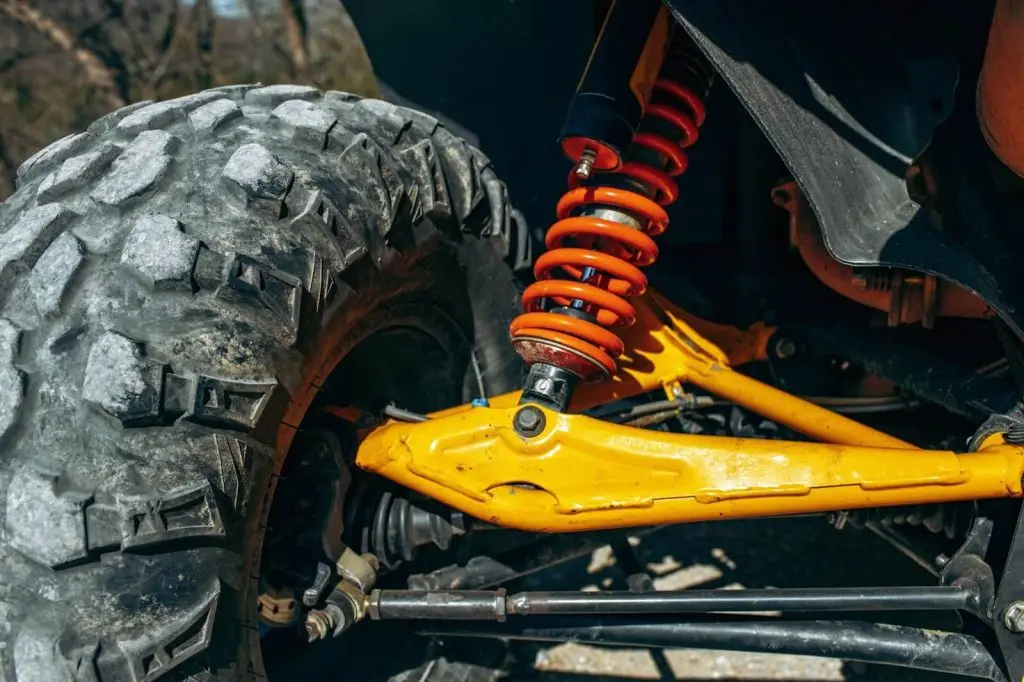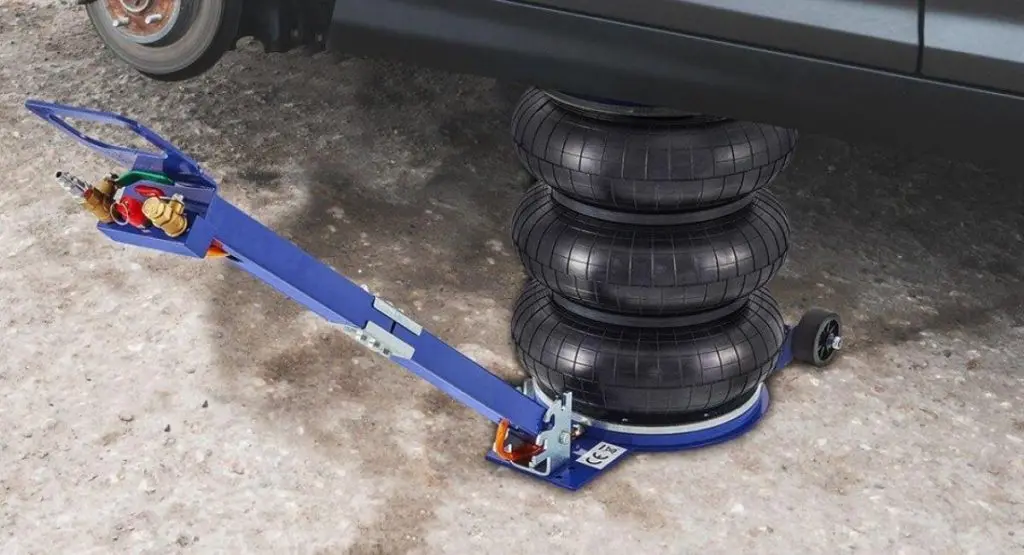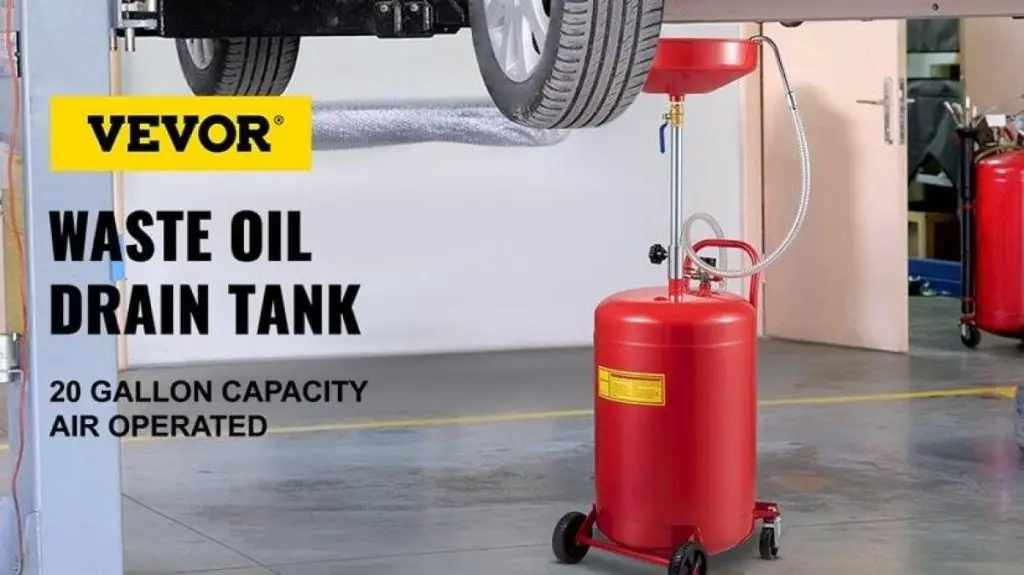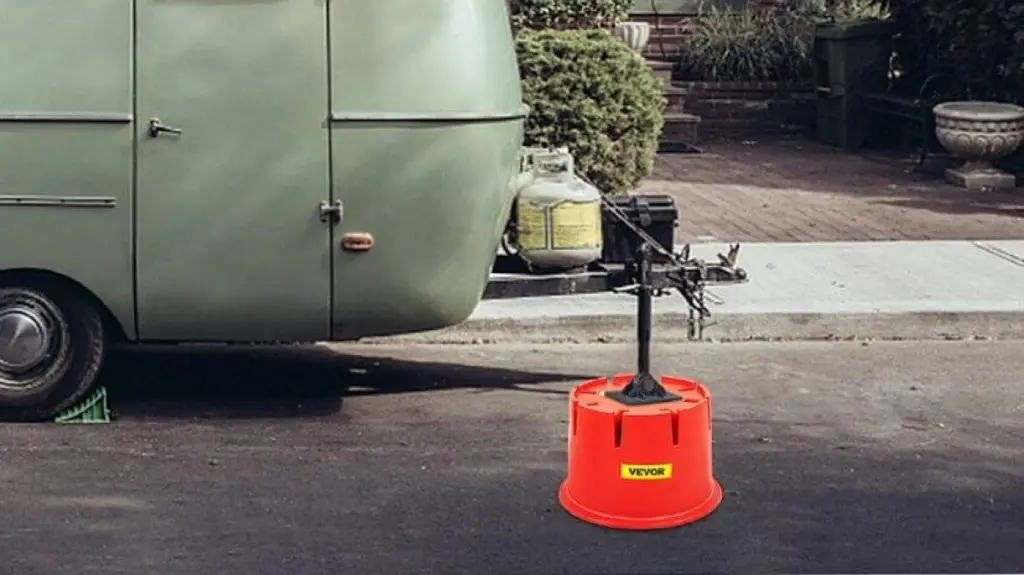Most of us have faced a scenario where we’re stranded with a flat tire and a toolbox that doesn’t hit the jackpot with everything you need for a quick tire fix.
Forget brute force – lifting your car is all about harnessing the power of physics. Before you start searching how to lift a car using physics, we’ve got a simple solution for you: hydraulic jacks.
Want to know the science behind this humble tool that can lift 10x its weight? Stick with us to learn everything you need to on how the hydraulic jack works. Besides that, we’ll also unlock the secrets of why VEVOR’s Electric Car Jack stands out for its reliability and efficiency.
Table of contents
Understanding the Basics of Hydraulic Jacks
It might come off as nothing less than amazing for a small hydraulic jack to effortlessly raise 4000 pounds of weight. If you’ve ever wondered how that happens, Pascal’s Law lays it down in simple terms. Without further ado, let’s get down to understanding it.
Suppose you have a water balloon. The water within is constrained, with nowhere to escape. If you poke that balloon with a pin, it will explode with pressure. Now here’s the thing; the water’s pressure distributes equally in the fluid and the entire inner surface area.
That’s Pascal’s Law in action.
Let’s apply that to the workings of a hydraulic jack. Once you press the piston on the jack, you apply force to the fluid within the piston. Recapping what Pascal taught us, the pressure exerted reaches every wall, including the larger piston. Since the surface area of the larger piston is greater, the force remains the same, but the overall pressure will be higher.
Look at it this way: you’re using the same force to move an object with your pinky finger and then your whole palm. While the force remains the same, the surface area increases, meaning the pressure increases. As a result, the object is more likely to move more easily when using your palm.
Pascal’s Law has done wonders in understanding day-to-day concepts. However, the hydraulic jack’s mighty lift is thanks to its clever design. So, onto that next!
Key Components of a Hydraulic Jack
It is essential to know the details if you want to understand how does a hydraulic floor jack work. But before we get to the step-by-step guide, let’s discuss the key components of a hydraulic jack, including the unique features in VEVOR’s robust design. So, shall we?
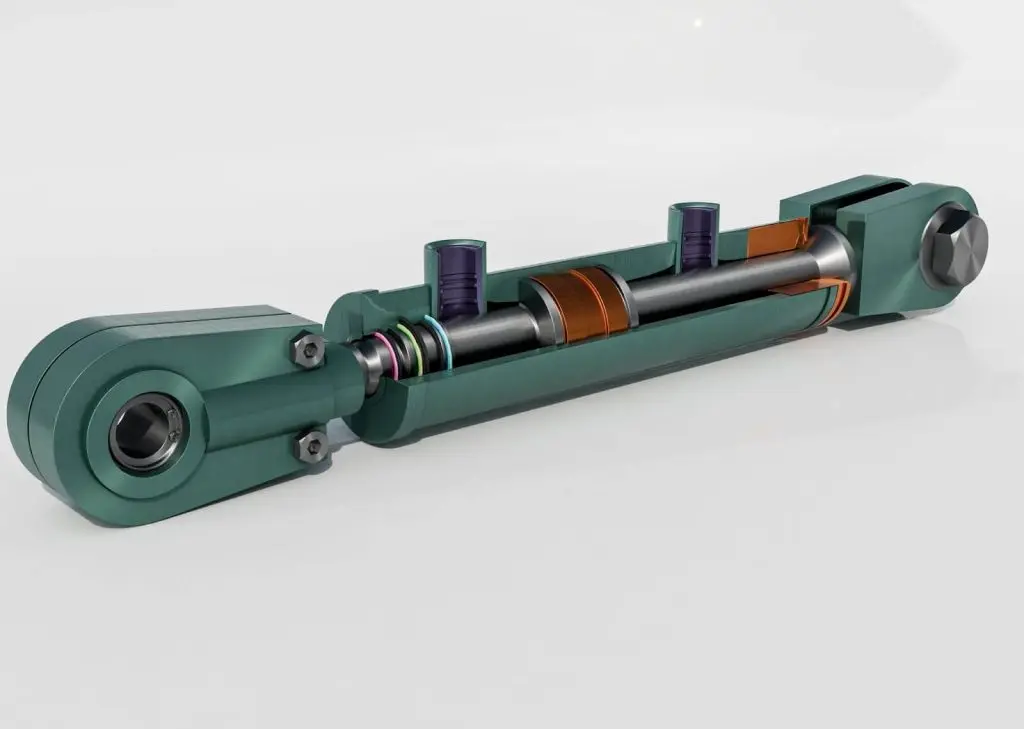
Reservoir
As the word suggests, the reservoir is a storage tank or container that reserves and stores hydraulic fluid. By releasing the hydraulic fluid, a reservoir helps prevent heat buildup during lifting.
The reservoir in a VEVOR jack can store more than substantial amounts of hydraulic fluid, making the lifting process more efficient due to increased lubrication and heat dissipation.
Pump with Piston
The pump in a hydraulic jack alongside the piston mainly pushes and moves the hydraulic fluid. It does so by moving the piston, which eventually creates pressure, resulting in a streamlined lifting process.
VEVOR jacks are equipped with an efficient and reliable duo of pump and piston. Whether you’re operating electrically or manually, the pump and piston will generate significant pressure, leading to swift and timely lifting.
Check Valve
The check valve allows a one-way passage to the hydraulic fluid. Also known as a one-way valve, it checks whether the hydraulic fluid flows in the right direction without any backflow. Without a check valve, the hydraulic fluid would somehow find its way back to the pump chamber, resulting in a faulty lifting process.
With VEVOR’s hydraulic jacks, you don’t have to worry about any backflow since our efficient and sturdy one-way traffic controller ensures that the right amount of pressure required for your lifting is continuously maintained.
Main Cylinder (Ram)
Whenever you hear the word main cylinder or ram in the world of hydraulic jacks, think of it as the biceps muscle of your arm. This component actually carries out the lifting process. The pump and piston pressurize the hydraulic fluid from the reservoir. From there, it enters the main cylinder, applying a force on the ram. Varying sizes and diameters of the main cylinder and ram determine the load capacity of the jack.
Since the main cylinder carries out all the main work, it has to be built with quality raw materials. For this reason, VEVOR’s hydraulic jacks boast a reliable and durable main cylinder that is second to none in terms of longevity, rigidity, strength, and efficiency.
Release Valve
Imagine lifting a heavy shopping bag from the floor to put it on a counter. Once you’ve raised the bag above the counter’s height, you ease the pressure to lower your arm and place the bag on the counter. The release valve works on the same principle. Once the lifting is complete, the release valve allows the pressure created by the hydraulic fluid to be released, resulting in the retraction of the main cylinder.
The release valve in VEVOR’s hydraulic jack prevents a bumpy and abrupt descent to ensure a smooth lowering by precisely controlling the pressure within, resulting in a smooth, streamlined descent. With VEVOR’s hydraulic jack, there is no compromise on the safety of the load, user, and jack.
How a Hydraulic Jack Operates
If the workings of a hydraulic jack have always had you scratching your head, it’s time to demystify this simple tool. How can something that weighs a few pounds hold an entire car up?

We’ve discussed the law that makes it happen, but now, let’s get down to the actual step-by-step process of what happens behind the scenes.
Pumping it Up
Remember the reservoir that contains the fluid to bring the whole thing into action? It’s time to grab the handle and start pumping. With each pump, the fluid is forced out of the reservoir into the chamber. In return, the chamber creates pressure for the fluid to get ready for action.
Not a fan of all that manual pumping? We aren’t either. VEVOR’s electric car jack ensures you can leave those troubles behind, with multiple charging options and a push of a button. Even if you’re a first-timer, their user-friendly design will make it a breeze.
One-Direction Flow
Next, the fluid passes through a one-way valve. This valve plays an important role, i.e., forcing the fluid to flow in one direction only. There’s a dual reason for that, which is to ensure that the fluid reaches the piston in the main cylinder and builds up pressure.
Entering the Main Cylinder
The valve has done most of the work. By now, the pressurized fluid is headed straight for the main cylinder. Once it gets there, it hits against the ram with full force, which makes it lift the load with massive strength. With that, the vehicle goes up and beyond.
VEVOR’s precise engineering ensures that the lifting is smooth and controlled, eliminating any jerky movements that may put the process in jeopardy.
Time to Let Go
Once the work is done and dusted, it’s time to lower the vehicle. In this part of the process, the release valve makes its entry. By releasing the pressure from the fluid, the main cylinder starts to retract, allowing for a gradual descent.
If you don’t want your car to hit the ground in a sudden motion, don’t go for a cheap hydraulic jack. VEVOR’s Electric Car Jack ensures your vehicle lands safely with safety mechanisms that guarantee controlled motions.
Selecting the Right Hydraulic Jack: What to Consider
Now that you know how hydraulic jacks work, you might be ready to have a backup option in your car trunk so you never have a flat tire nightmare. A hydraulic jack is all you need for DIY repairs and roadside emergencies.
With that said, the market is booming with thousands of hydraulic jack options that pop up once you start searching. For this reason, we’ve highlighted the main factors you should consider before making a purchase.
Know Your Load
This is one of the biggest factors that decide your hydraulic jack model. Different hydraulic jacks come with different maximum weight limits. If your car exceeds that limit, the hydraulic jack won’t do you any good.

An average vehicle weighs 4,000-4,200 pounds, which means even a 2-ton jack would fit the bill. However, it’s best to stay on the safe side and get a jack that has the lifting capacity for a wide range of vehicles. Your best bet is to get one that can lift 5 tons, i.e., 11,000 pounds, such as VEVOR’s Electric Car Jack.
Mind the Clearance
Not all jacks fit under every vehicle. Therefore, a crucial step before buying a hydraulic jack is to check the clearance space beneath your vehicle. The jack should fit like a glove in the available space.
To do this, measure the distance between your car’s frame and the ground. Next, check the lifting range of the model you’re interested in. The VEVOR Electric Car Jack keeps those factors ticked off, with a lifting range of 6.1” to 17.7” (155-450 mm), which is ideal for standard car clearances.
Reach High Places
If you’ve had to perform an engine check in your garage, you’d know that a few inches wouldn’t do. Keeping that in mind, it’s best to get a hydraulic jack that offers the maximum lift height than get stuck with one using which you can only change tires.
Whether you need a jack for monthly maintenance or full-on repair tasks, make a one-time investment that has a convenient lift height for various tasks. Once again, the VEVOR Electric Car Jack goes up to an impressive 17.7” inch, giving you the flexibility to lift your car and perform multiple maintenance and repair tasks.
Consider the Application
Wondering what the thousands of varying hydraulic jack models are all about? Besides weight limits, another important differentiating factor is the usage.
Do you want to use yours for rare roadside emergencies or regular maintenance sessions every week or so? Ask yourself that question because that’s essential in ensuring that the jack aligns with your application needs.
If you’re someone who only takes your jack out once a few months for a tire change, a basic jack will get the job done. But why not get one that is versatile and suitable for a wide range of applications, such as VEVOR’s jack? This model’s versatility outshines most, but its robust features, including a built-in electric impact wrench, tire inflator pump, and LED light, deserve equal spotlight.
Maintenance and Safety Tips for Hydraulic Jacks
Fixing those car problems with your trusty hydraulic jack in a jiffy is one thing, but keeping it in tip-top shape and using it safely is another. The following are the best maintenance and safety practices to stick to that will ensure you’re not making another hydraulic jack investment anytime soon!

Routine Inspections
You don’t want a hydraulic jack giving up on you mid-process. Therefore, it’s necessary to get it out and perform a proper visual check now and then. See if there are any signs of damage, wear and tear, or leaks.
Tired of inspecting your low-grade hydraulic jack every other week to see if the damage or wear and tear has exceeded usable levels? VEVOR’s Electric Car Jack goes the extra mile with high-quality materials that are leak-proof and durable.
Oil it Up
Just as with any machine, hydraulic jacks need their dose of lubrication once in a while. If it’s drying up, you’re in for trouble. To prevent wear and tear, keep the moving parts lubricated, including the pump, piston, and release valve.
Proper Storage
Don’t just leave your hydraulic jack in your backyard. Store it in a clean and dry environment, away from direct sunlight and extreme weather. This way, your hydraulic jack can stay safe from rust and seal deterioration.
Where most basic hydraulic jacks won’t last a few years, VEVOR’s jacks are built for longevity. While you should still store it in the right place, it can withstand extreme conditions better than most models owing to its state-of-the-art manufacturing and design.
Look Out for Fluid Levels
You can neither under or overfill the fluid within the hydraulic jack. The reason is that lower levels will have your hydraulic jack unable to retain efficiency, while overfilling can cause damage. If you’re unsure how much is enough, refer to the manual to check the correct fluid level amount.
Find the Right Balance
An unstable ground can compromise the stability of the hydraulic jack, leading to potential accidents and injuries. Always ensure you’re operating the jack on a stable and leveled surface. Similarly, you want a centralized positioning for the jack, ensuring equal load distribution.
Not a seasoned mechanic? We’re all prone to making mistakes, but it only takes one uneven surface for disaster to hit. The good thing is that VEVOR’s wide base and built-in safety mechanisms ensure height and overload protection as well as maximum stability, even on slightly unstable surfaces.
With these maintenance and safety tips and a robust hydraulic jack like VEVOR’s, your hydraulic jack won’t give up on you for decades. Remember, a little care and the appropriate jack go a long way!
Summing up
So, there you have it! We’ve got the hydraulic jack and all its mechanisms unveiled from pump power to ram rise. In general, hydraulic jacks are all about the combination of fluid, pressure, and precision engineering to create and distribute pressure. The physics does the work, resulting in effortlessly lifting several thousand pounds.
If you’re ready to leave those car worries behind, it’s time to get a hydraulic jack and add it to your tool range. VEVOR’s Electric Car Jack meets all sorts of requirements, whether you’re a DIY newbie or a grease-trained guru. Ditch the struggle of manual hydraulic jacks and invest in an option that prioritizes safety, reliability, and durability.

